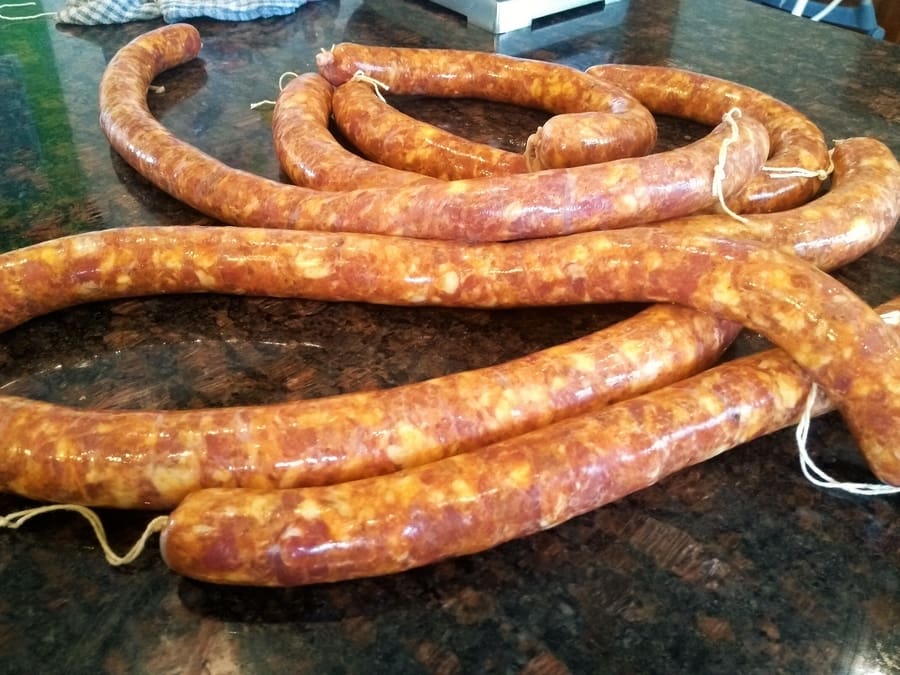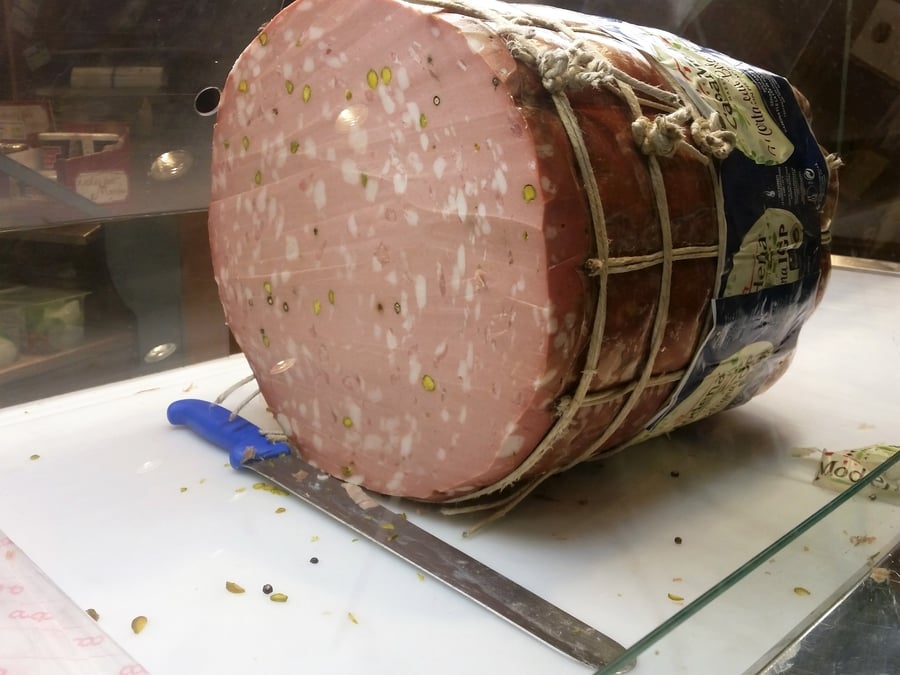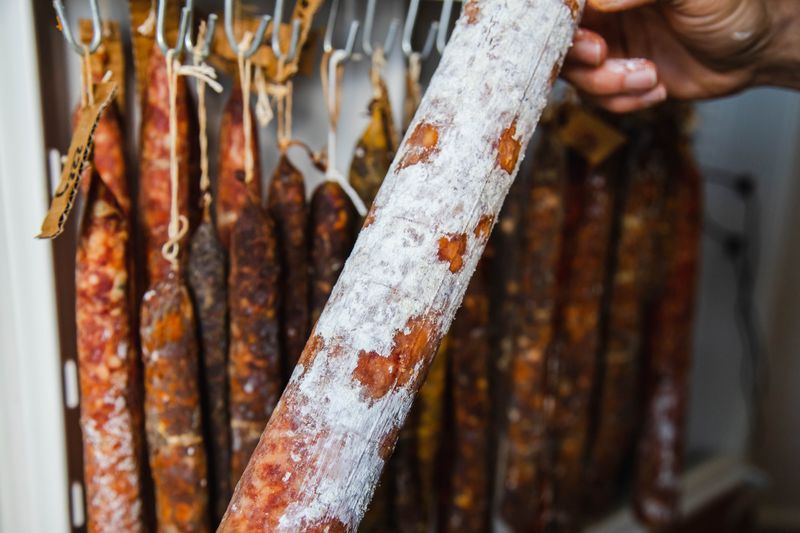I’ve made every variation of salami, and some are ready to eat; however, this happens after the salami is dried.
Any salami you buy should be ready to eat.
Ready-to-eat salami is found all over the world, but there are some variations that I thought need to be clarified. It seems a few marketing/packaging people have confused quite a few people, including myself, at times!
I have been making and buying salami (I wrote about different salami ideas also for pizza types) for decades and I thought it would be helpful to break down the confusion around ‘ready to eat.
To start with, let’s just summarize the answer then break it down into the facts,, and then talk about confusing labeling.
Different Salami
All salami sold in stores is ready to eat and requires no cooking. It is either ‘dry cured’ which is dried enough until it is safe to be consumed. Or cooked salami which is ready to eat also includes hot smoked salamis which are ready to eat but not preserved.
So that’s the short version, there are variations of confusing product labels that I will go over below. Probably the most confusing is the ‘Uncured” salami.
All salami sold is ready to eat including Genoa, Beef, or ‘Uncured‘ Salami
What is Salami?
3 Types, they look different and are made differently:
- Dry Cured Salami
- Cooked/Hot Smoked Salami
- Emulsified Cooked Salami

Minced meat stuffed into a casing (natural or synthetic). But what about the different types there are? Either cooked via a water bath, cooked by hot smoking, or dry cured (and sometimes cold smoked as well). The below is dry cured salami we just stuffed and will hang to ferment, then dry and cold smoke for 4 weeks.

Dry Cured Salami
The power of salt is used for curing the meat. The salt inhibits the meat and creates a hostile environment for spoilage bacteria to grow. Low amounts of nitrates are often used to help make the meat safer, eliminating Botiulsim bacteria.
Lactic acid is either already in natural meat or can be produced using starter cultures of bacteria (what most people do, you just buy the stuff). This acidic environment makes it hard for bacteria that spoil meat to grow.
Temperature is higher, depending on the acidic culture, when fermenting before drying.
Then the dry-cured salami is hung in a humid cool environment to dry out, once it reaches at least 65% of its starting weight.
The removal of the moisture means funky bacteria can’t spoil the meat very easily. The cool environment say around 86°F/11°C allows drying but minimizes external contaminants. This is why we build a DIY curing chamber for this, check out a post here on them.
Sometimes the dry-cured salami is then cold smoked (smoked under 86°F/30°C) to impart other flavor angles, this can be sessions of hours or days – depending on the salami style.
Cooked/Hot Smoked Salami

I have made ‘cotto’ (cooked in Italian) salami before, it’s a sausage (meat, spices & casing) that has been cooked. I used hot smoking to cook my ‘cotto’ salami.
Some bier sticks you buy will also be hot smoked, so they aren’t preserved like dry-cured salami.
What is the White Stuff on Some Salami?

When making salami, it can be beneficial to have good bacteria on the outside of the salami during the drying phase.
This is good penicillin, yes, the same stuff you find in the hospital. As a home meat curer (try hard, Norcini), I have built a curing chamber that is used for making dry-cured salami and salumi (whole muscle dry-cured meat, e.g., prosciutto—check out what salumi is here).
Often, it can bloom naturally from their meat in favorable drying conditions.
Once my DIY curing chamber had some tasty meaty goods in it, the curing chamber had ‘invisible’ penicillin living in it. So when I put cured meat in to dry/preserve it starts to protect and grow on the meat. When I see bacteria I don’t want, I use vinegar to wipe it off.
This is how it has been done in Italy for thousands of years (without the controlled curing chamber). You will find that salumi cured meat across Italy is produced near rivers or land – since the higher humidity helps keep the meat’s exterior from drying out (known as case hardening).
They say the less the meat is messed around with, the more beneficial bacteria it generally has. In a world where hormones, etc., are injected into meat, a theory is that this influences the meat’s ‘good’ bacteria levels.
Difference between Raw Sausage & Salami
Raw sausage needs cooking, it is just raw meat stuffed into a casing. Salami is usually dried until it can be consumed (like jerky). Or cooked (cotta) salami is ready to consume since the process involves cooking. Hot smoking is cooking with smoke which is also ready to eat.
Does ‘Uncured’ Salami Need to be Cooked?
Uncured salami does not need to be cooked. Curing is the process of using salt to help dry and preserve the meat. Labeling has become confusing since curing is referring to nitrates which these manufacturers are trying to avoid.
Uncured salami is sold in stores, but it is cured because they use salt to preserve the meat.
In the US, as I write this, the USDA regulatory body considers ‘cured’ as using synthetic chemical nitrates. So ‘uncured’ is used when natural nitrates are used like celery powder.
Every week there is a new scare about what food is good for you and what isn’t. Most nitrates are produced in your body, and I used a minimal amount in my dry-cured meat. Recent research shows, more nitrates would easily be consumed from eating a cup of green spinach.
But hey, those marketers love to sell on a bit of fear! Hence, ‘nitrate’ free and ‘uncured’ products are on packaging.
Since Roman times ‘nitrates’ were added in the form of saltpeter or depending on where you like saltpetre.
List of Uncured ‘Labelled’ Products that are Ready to Eat
- Genoa Uncured Salami – Ready to Eat
- Uncured Pastrami – Ready to Eat (in effect, Hot Smoked, meaning cooked with smoke)
- Beef Salami – Ready to Eat
- Chicken Salami – Ready to Eat
Yes, it is cured; there is confusion with the wording/labeling guidelines.
The Packaging Loop Hole – Uncured
Supposedly, when companies don’t use sodium nitrate or sodium nitrite, they can say that the meat is ‘uncured’. But in effect, you will generally find another form of nitrate such as:
- Celery Powder
- Celery Juice
- Beetroot Powder
Related Questions
Is Salami Cooked or Raw?
Salami can be cooked, Italian’s call this ‘cotto’. The other version of salami (I’ve written about some of the interesting salami for pasta salad here) is dry cured, which begins being raw and is then dried until safe to consume, it is also preserved at this point.
Does Uncured Salami Need to be Cooked?
Uncured is a labeling discrepancy since salami is always salt-cured. Uncured cooked / ‘cotto’ salami or dry cured salami which is uncooked can be eaten without cooking.

Tom Mueller
For decades, immersed in studying, working, learning, and teaching the craft of meat curing, sharing the passion and showcasing the world of charcuterie and smoked meat. Read More
